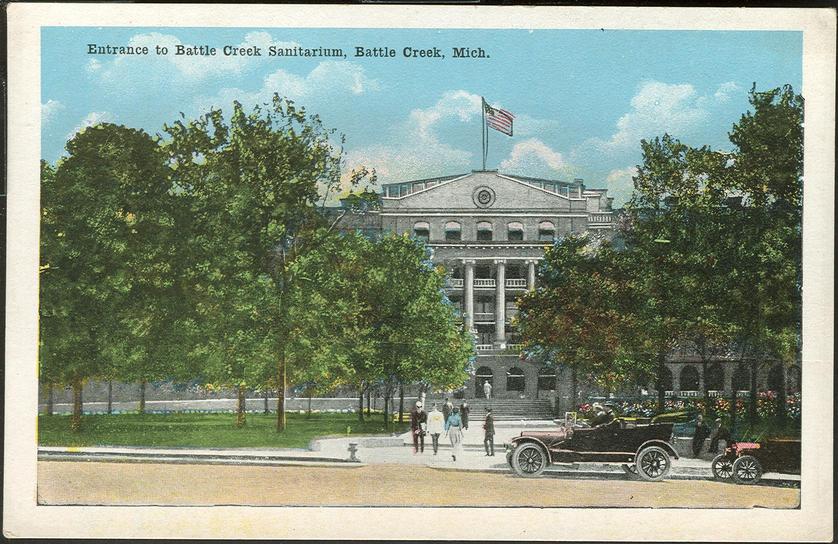

Washington Avenue and Champion Street intersection, has a dramatic two-story-high Ionic colonnaded loggia across the primary facade and copper copings, cornices, and roofing. The fifteen-story Beaux-Arts classical Towers addition, at the south end facing the N.

Three wings at the rear, containing the women's baths, a gymnasium, and the men's baths, radiate from a rotunda that originally held a palm garden. Its formal exterior features a projecting pedimented central pavilion of Ionic columns, which is balanced by pedimented end pavilions. It has a reinforced-concrete frame and floors and a light yellowish-gray brick exterior. Designed by Andrews of Dayton, the five- and six-story, 580-foot-long “Temple of Health,” as the Battle Creek Daily Moon (June 1, 1903) referred to it, is Beaux-Arts classical in design. In 1902–1903 the Michigan Sanitarium and Benevolent Association constructed the lower, main part of the present building. The first sanitarium main building, a Second Empire structure erected in 1878, burned in 1902.

Kellogg withdrew to what is now Kellogg's. Kellogg and his younger brother, Will Keith Kellogg (1860–1951), led to the development of new grain and nut products, including dry flake cereal. Experiments conducted at the sanitarium by Dr. A “sanitary retreat for the restoration of bodily health and for training in the right and healthy way to live,” the sanitarium served a predominantly wealthy clientele, eventually numbering nearly ten thousand a year. John Harvey Kellogg (1852–1943), the Western Health Reform Institute founded in 1866 by the Seventh-Day Adventists became, in 1876, the Battle Creek Sanitarium.


 0 kommentar(er)
0 kommentar(er)
